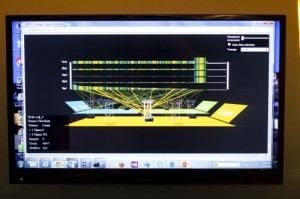
Imagine this scenario: Every device we encounter in our day-to-day routine – from our refrigerators and automobiles to our water and gas meters – has embedded sensors that read real-time information and generate unfathomable amounts of data.
Now take this scenario one step further. Imagine what kinds of insights we’d discover if all these devices were connected to the Internet as well as each another, and could be monitored, analyzed and controlled.
This is the Internet of Things (IoT) and it’s not as futuristic as you might think. Gartner, Inc. says that by 2020 the IoT will grow to 26 billion units, representing an almost 30-fold increase from 2009.
If your organization wants to make sense of and capitalize on all of its data assets, you can't ignore the IoT revolution, or the ensuing rush to analyze all of the resulting data.
Event Stream Processing quickly identifies patterns in complex data
An important feature of IoT data is that it's a constant stream of data. And it is data that needs to be analyzed as it streams into the organization – not weeks or months later, after it has been stored and sorted and prepped for various uses.
For example, the need to process massive amounts of streaming data in real time is crucial for industries like financial services to detect fraudulent trading activities, or utilities to choose the optimal power source at any given time. Analyzing data after it has been stored just isn’t sufficient. These customers must be able to process and analyze data in milliseconds – or even microseconds – to remain competitive and get the most value from their goods and services.
Unlike other forms of analysis, which store data that is then analyzed, in event stream analysis the query is stored and the data passes through the query – with very high throughput and in huge volumes. That is how event stream processing technologies are used to continuously analyze data – as it is received, giving organizations the agility to conduct analysis and continuously monitor patterns in real time, directing immediate actions associated with mission-critical systems.
At SAS, the technology used to process streaming data is the SAS® Event Stream Processing Engine, which can process millions of events per second while also identifying and assessing problems that would otherwise go unnoticed through information lag.
Award winning collaboration with IoT data

An underwater oil pump monitoring solution illustrating breakthrough Internet of Things (IoT) technologies received an Independent Software Vendor Award at the Axeda® Connexion™ event. The solution combines the SAS Event Stream Processing Engine and Axeda Machine Streams to immediately analyze live data from seabed monitoring devices and sensors. The resulting information could prevent estimated losses of $2 million per day for large natural resource manufacturers,
With the combined high-power capabilities of SAS technologies and Axeda's Machine Streams, deep statistical calculations are run to determine if and when pumps need maintenance or replacements. At any given time, up to the second, visual monitoring shows what pumps are exceeding pre-defined patterns, creating alerts and indicating malfunctions, or not functioning at maximum capacity, potentially saving a company millions.
This successful and ground-breaking illustration was highlighted at Axeda’s Connexion Conference and honoring SAS at the IoT Excellence Awards ceremony. During the event, Axeda acknowledged the most innovative IoT solutions, including SAS Event Stream Processing Engine.
ESP technology offers exciting opportunities
The principal innovation leaders behind SAS Event Stream Processing Engine are R&D Director Jerry Baulier, who has been working on event streams and complex event stream processing for 20 years, and Principal Software Developer Scott Kolodzieski, who came to SAS with Baulier after having built the Aleri Complex Event Processing Engine. Baulier’s team at Bell Labs Research also built the first commercial ESP technology.
“This is the third, and by far the best, ESP technology that I’ve had the pleasure to be involved with,” said Baulier. “Axeda has been a great partner for us, and the entire team is very excited about SAS’ future growth in IoT.”
